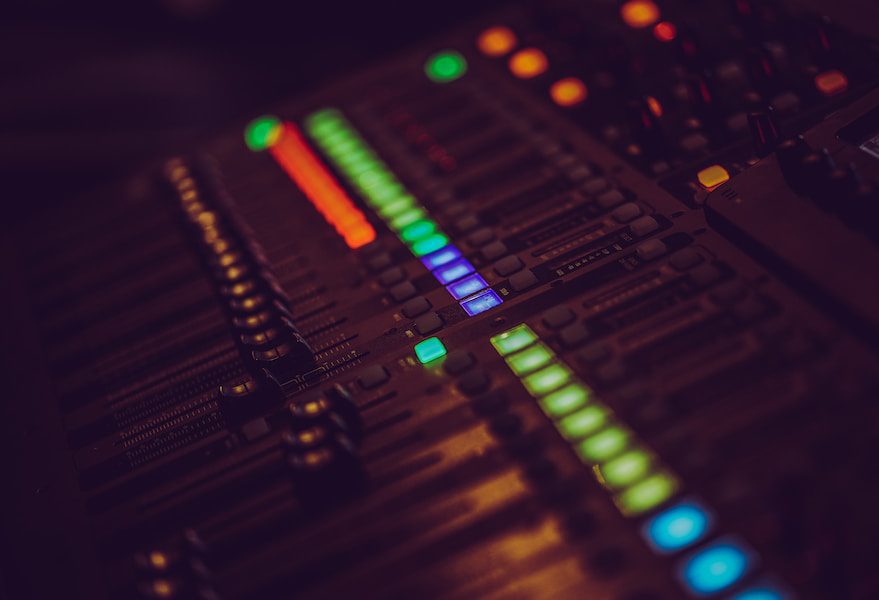Bus compression is a common technique used in audio production to achieve a more cohesive and polished sound. It involves compressing the entire mix or a group of tracks rather than individual tracks. The goal is to create a more balanced and consistent sound by reducing the mix’s dynamic range.
Bus compression is a technique used in audio production to control the dynamics of multiple tracks or channels in a mix. It is a type of compression applied to a group of tracks, also known as a bus or subgroup, rather than individual tracks. Bus compression is commonly used in rock, pop, and electronic music to achieve a more cohesive and polished sound.
While bus compression can be a powerful tool in mixing, it should be used with caution. Over-compressing the mix can result in a loss of dynamics and a dull, lifeless sound. Finding the right balance and using the technique judiciously is important to achieve the desired effect.
Table of Contents

What is Bus Compression?
Bus compression is often used in genres such as rock, pop, and electronic music, where a loud and powerful sound is desired. The fainter parts of the song are brought up in volume by compressing the entire mix, while the louder parts come down. This creates a more even sound that is easier to listen to, especially on low-quality playback systems such as car stereos or portable speakers.
Definition
Bus compression involves routing multiple tracks or channels to a single bus or subgroup and then applying compression to the bus. This allows the engineer to control the overall dynamic range of the mix, making quieter parts louder and louder parts quieter. The goal is to achieve a more balanced and consistent sound while adding energy and impact to the mix.
How it Works
When a signal is routed to a bus, it is combined with the other signals also routed to that bus. This means that any processing applied to the bus affects all the signals routed to it. Compression is one of the most common processing techniques used on buses.
When compression is applied to a bus, it works by reducing the dynamic range of the signals that are routed to it. This means that the quieter parts of the mix are boosted while the louder parts are reduced. The result is a more balanced and controlled sound that is easier to mix and master.
Bus compression settings can vary depending on the genre, style, and specific mix. The attack and release times, ratio, threshold, and makeup gain are all parameters that can be adjusted to achieve the desired effect. It is important to use bus compression judiciously, as overuse can lead to a loss of dynamics and a flattened, lifeless sound.
Why Use Bus Compression?
Bus compression is a powerful tool used in various audio applications. Here are some of the benefits of using bus compression:
Benefits
- Glue: Bus compression can help glue together the elements of a mix, making it sound more cohesive and polished.
- Control: By compressing multiple elements at once, bus compression can help control the overall dynamic range of a mix.
- Consistency: Bus compression can help ensure all mix elements are consistent, making it easier to mix and master.
While there are many benefits to using bus compression, it’s important to use it judiciously and not overdo it. Over-compression can lead to a loss of dynamics and a flat, lifeless sound.
Examples
Here are a few examples of how bus compression can be used in different audio applications:
| Application | Example |
|---|---|
| Music Mixing | Using bus compression on the drums can help glue them together and make them sound more cohesive. |
| Podcasting | Using bus compression on the entire mix can help ensure that all voices are at a consistent level and that the overall dynamic range is controlled. |
| Live Sound Reinforcement | Using bus compression on the main mix can help control the overall dynamic range and ensure that the mix is consistent throughout the venue. |
Tips for Using Bus Compression
Settings
When using bus compression, it is important to understand the different settings and how they affect the sound. The threshold determines the level at which the compressor starts to work, while the ratio controls how much gain reduction is applied.
The attack and release settings determine how quickly the compressor kicks in and how quickly it releases the gain reduction. Finally, the makeup gain compensates for the loss in volume caused by compression.
Try using a lower ratio and longer attack and release times for a more subtle effect. This will allow the compressor to work more gently and create a smoother sound. Try using a higher ratio and shorter attack and release times for a more aggressive effect. This will create a more pronounced effect and add more punch to the sound.
Techniques for Bus Compression
Several techniques can be used when applying bus compression. One common technique is parallel compression, where a copy of the uncompressed signal is mixed with the compressed signal. This can help maintain the original signal’s dynamics while adding the benefits of compression.
Another technique uses sidechain compression, where a separate signal, such as a kick drum or bassline, triggers the compressor. This can help to create more space in the mix and prevent certain elements from overpowering others.
Finally, it is important to use your ears when applying bus compression. Experiment with different settings and techniques, and listen carefully to how the sound is affected. Don’t be afraid to adjust and try new things until you find the perfect balance for your mix.
- Review of the ALABS IRON MINI-WL: A Powerhouse Wireless Microphone - October 4, 2023
- What is a Saturator in Music Production: A Brief Explanation - May 11, 2023
- What Are Rotary DJ Mixers? An Overview - May 11, 2023
SoundStudiomagic.com is a participant in the Amazon Services LLC Associates Program, an affiliate advertising program designed to provide a means for sites to earn advertising fees by advertising and linking to Amazon.com. We also participate in other affiliate programs which compensate us for referring traffic.

